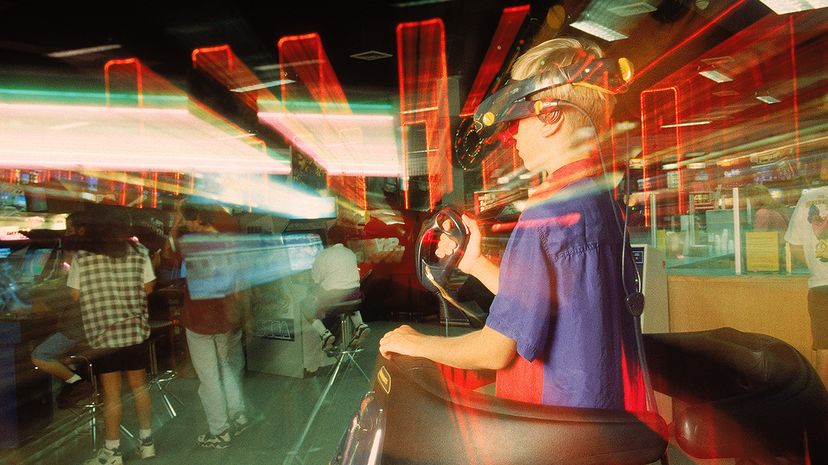
At 718 Northwestern Ave. in Austin, Texas, you can ride an elevator to the 50th floor and then test your nerves by walking out onto a wooden plank 500 feet (152 meters) above the street, while your friends cheer you on. If it sounds extreme, don't worry, it's a virtual reality game, and the only thing crashing to the ground is your hubris.
Richie's Plank Experience is one of many games people can play at Originator Studios, a new virtual reality arcade that opened this month in East Austin. You can get a feel for what it's like to play the VR game in this video:
Advertisement
And for an hourly fee of between $60 and $95, players and their friends can rent Orignator Studios' 800-square-foot (74-square-meter) space and two HTC Vives — high-end VR systems that each come with a headset and two hand-held tracking devices.
It's not an arcade in the 1980s sense of the word, with scads of video game machines chiming and binging in a cacophony of color. It's more like a giant living room — minus the furniture to bump into — with wall-mounted infrared sensors that track up to two players in 360 degrees and ceiling-mounted projectors that display live video feeds on the walls. This gives friends a chance to see the action and respond to the players.
"It's a lot more fun, we found, to be with your friends doing it, having them watch it and cheering you on to walk down that plank," says Willie Rockefeller, who co-owns the studio with Derek Gildersleeve.
Gildersleeve and Rockefeller met in college at the University of Texas, Austin, and after graduating in 2009 went into business together as video producers. They bought the production studio in East Austin last summer during the emergence of VR, and quickly realized it was perfectly suited for VR and mixed reality productions that merge real and virtual videos into one experience. They began creating custom VR content with their sister company, Hybrid VR, and started showing their friends and family what it was like to get immersed in a VR game in a large, unobstructed space.
"Most of them had never done VR before," says Gildersleeve. But the experience transformed them, and it was hard to break them away when their time was up.
"It started to become apparent that it was the perfect place to do something like an arcade," says Gildersleeve.
Although VR arcades are popular in China — there are more than 3,000 of them in the country, according to Forbes — there are just a smattering of places to experience VR gaming across the United States and Europe. In the U.S., VR Junkies, Imax VR, The Void, notionVR, and Sphere are beginning to make headway, but they all have challenges to overcome.
For starters, it's expensive to create a room-sized experience. The gear and computing power for a Vive can run upwards of $5,000. Even a living-room-sized system can cost a few thousand dollars, and you need the space to move around. That means few people have been immersed in a true VR experience and may mistake the pseudo-VR available on smartphones for the real thing. But a phone can't track your location, and without that capability, users can get queasy.
"A lof of the motion sickness in VR comes from the world moving when you don't want it to," says Gildersleeve.
Gildersleeve and Rockefeller are coming onto the scene in the early days, and one of the biggest challenges they've faced so far is simply getting the word out. They had a soft open on June 1, when they started taking reservations. On June 16, they're hosting a VR Fruit Ninja Warrior competition.
There's also the question of why people would pay to play at a VR arcade in the first place. Some games may not yet be mind-blowing enough to play alone and others may blow the mind, but leave the player feeling anticlimactic about a big win.
"It's a little lonely when you get a high score on a game and you feel success and then you take the headset off and no one's around you," says Rockefeller.
That's why they think having a group of friends around is key. People can book the space for $60 per hour to use one system, and $95 per hour to play with two systems. They can play by themselves or have a multiplayer experience. Plus, there's a kitchen in the back, so friends can bring their own drinks and food.
"It's sort of like going to a karaoke room, but a lot more futuristic," says Rockefeller.
They're even surprised by how much they enjoy seeing a first-timer trying out the system.
"We've had people of all ages get into the headset with excitement, uncertainty, and curiosity — all of that is shattered as soon as they realize, 'Oh I can walk around and play with this world?' It's one of the more gratifying moments," Gildersleeve says.
Advertisement
